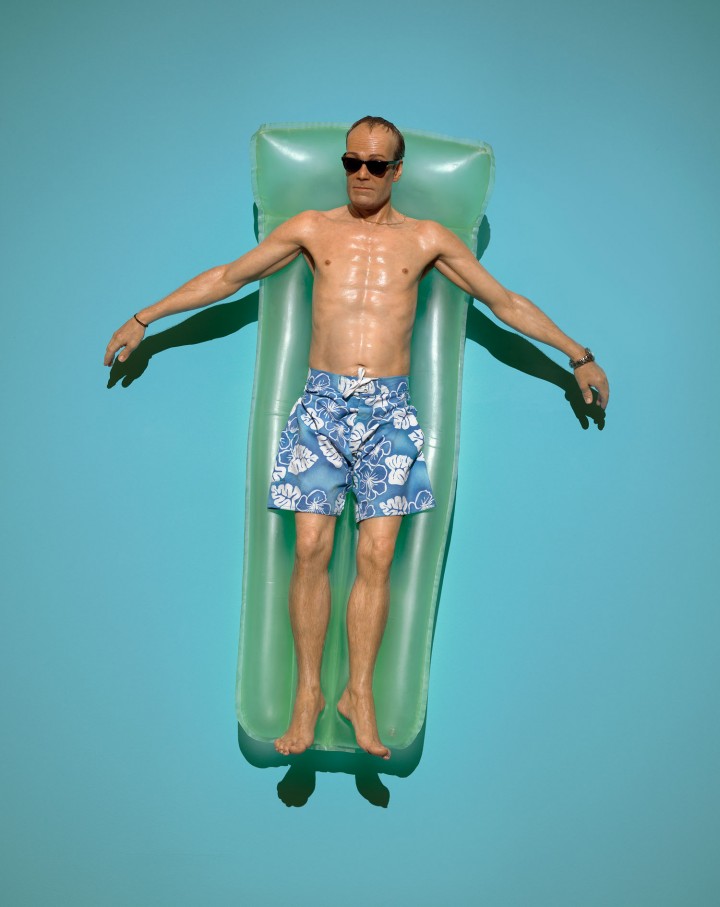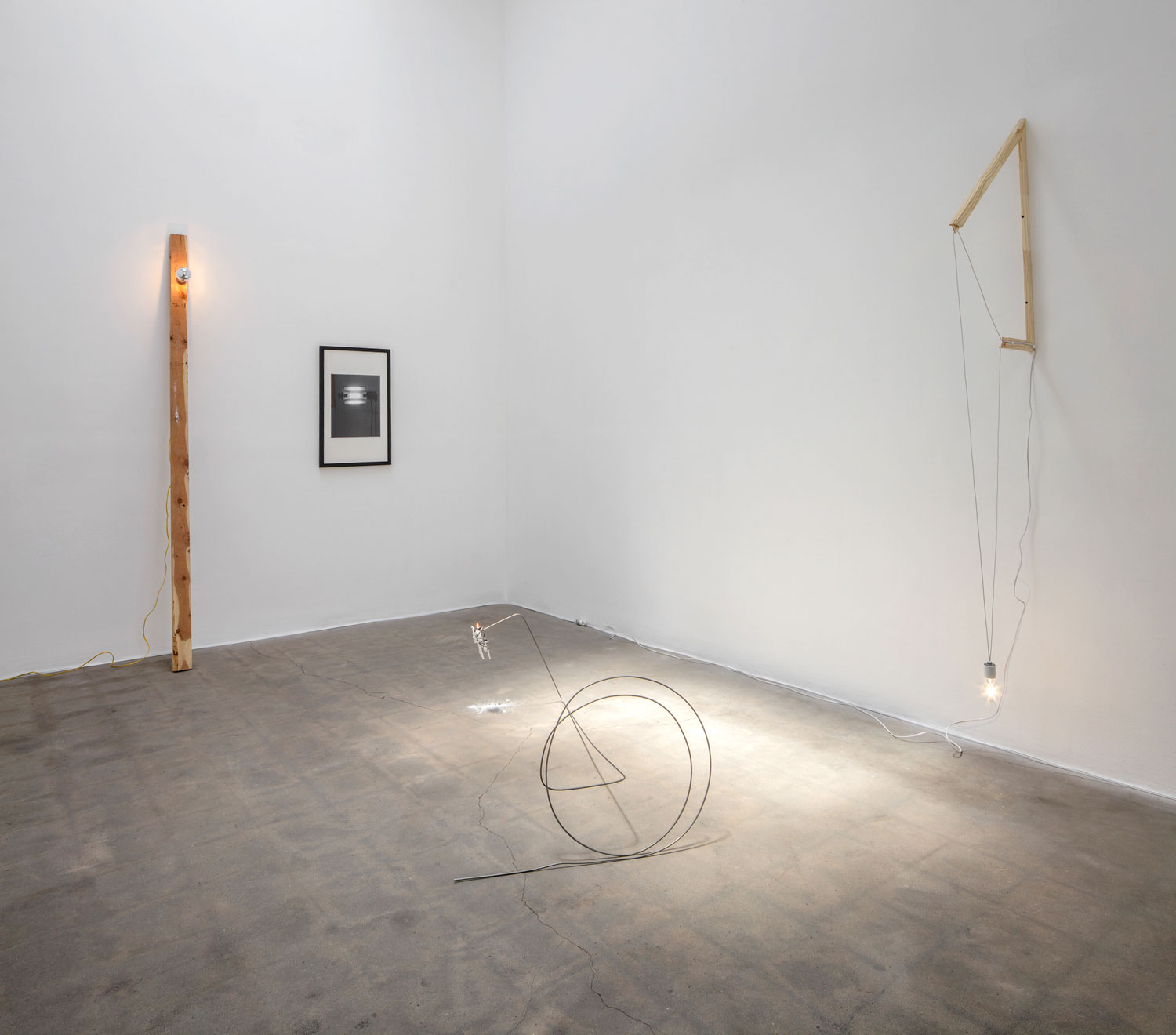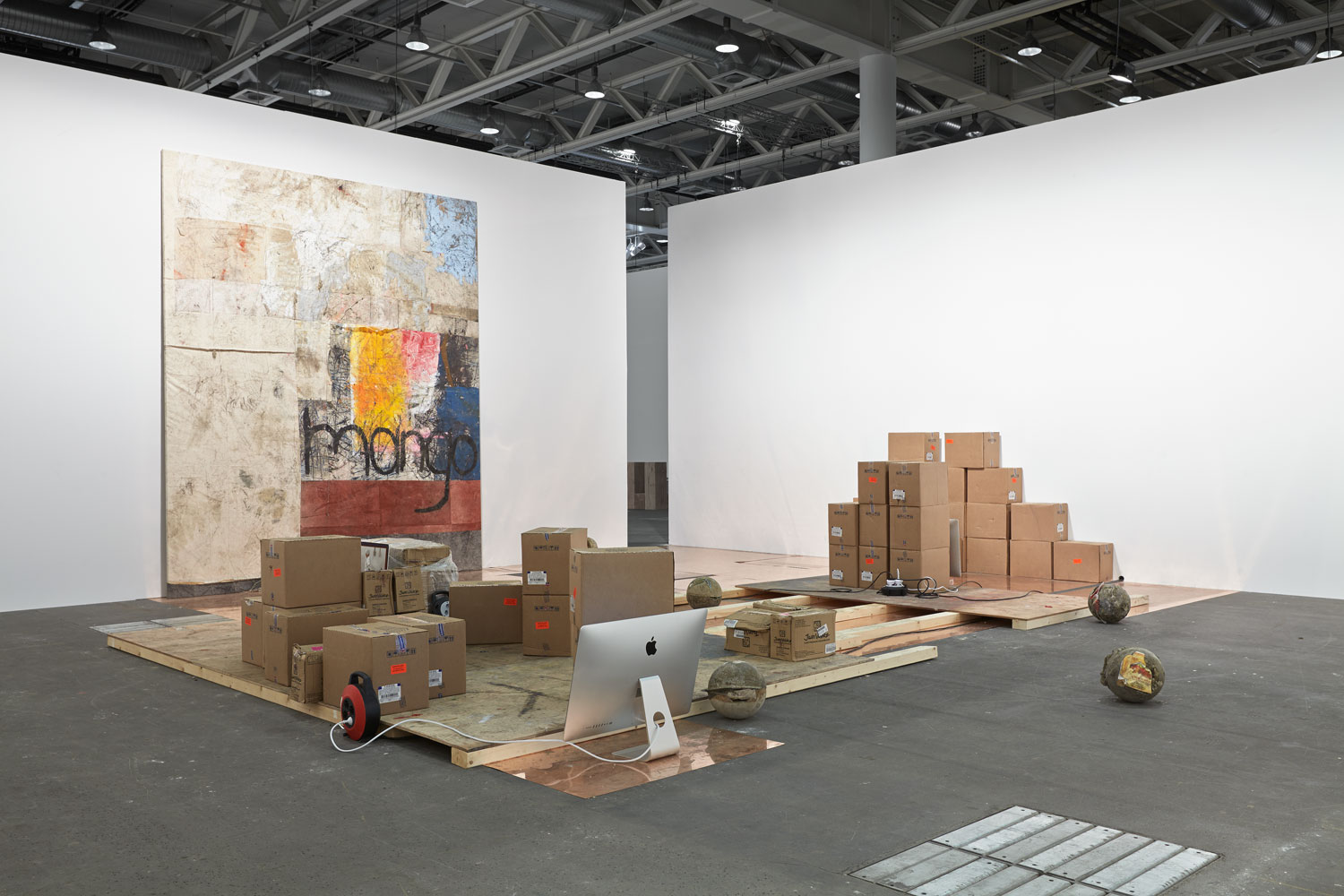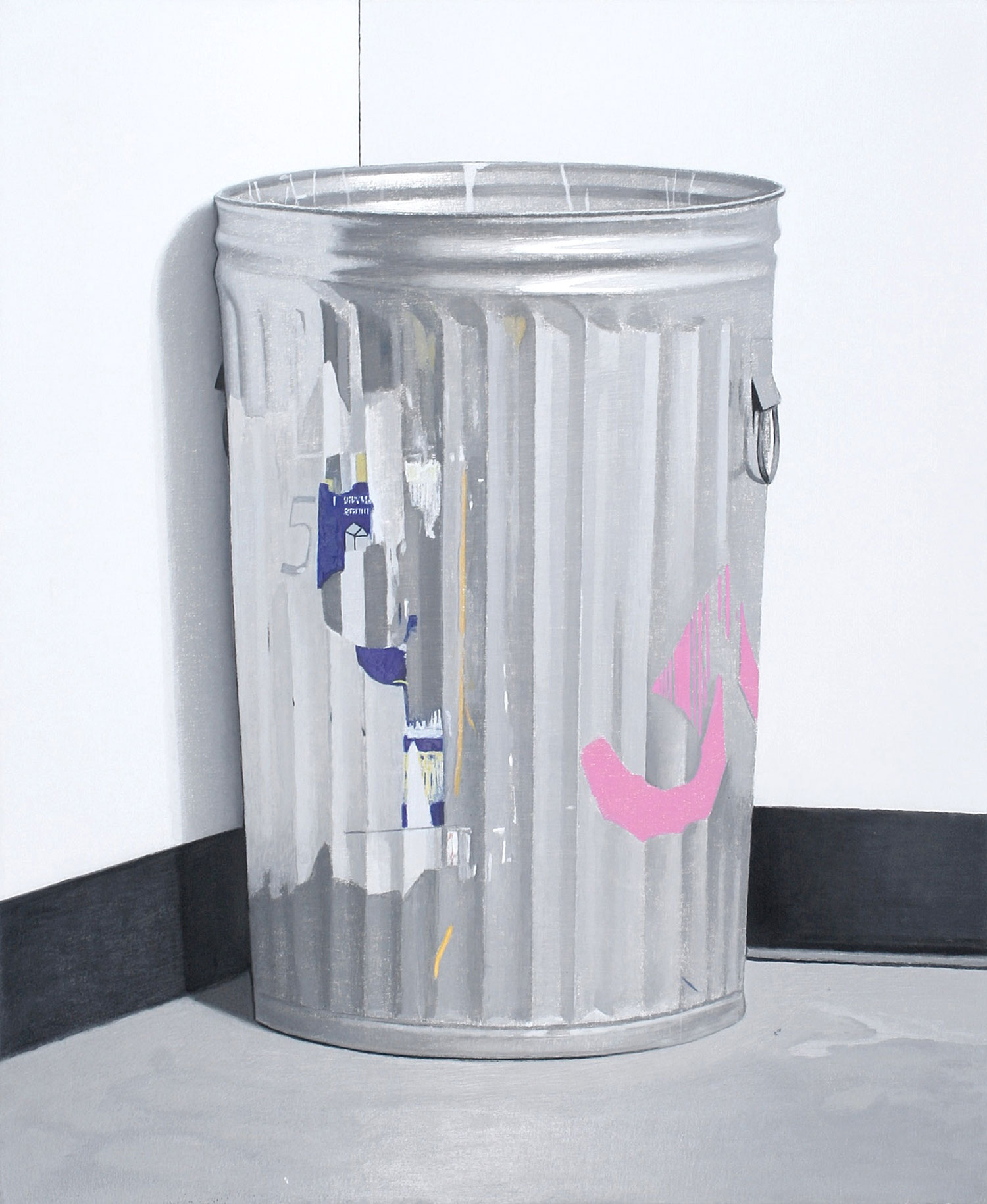
With arresting simplicity, the works of Ron Mueck depict figures, feelings and innate sensations that for generations and centuries have dwelled within each of us. His fragile figures, in their immense or minuscule proportions, harbor a human world wrapped in a universal microcosm.
Each sculpture creates an immersive relationship, filtered through the web of the viewer’s memories and emotions. Mueck speaks neither of the past nor of history: his work relates to the here and now, of which the past is but a part. Put simply, his work deals with life experience. Less simple, however, is the task of creating archetypal figures. For this implies gazing directly at the mystery of life and representing the immensity of the reflection. It requires the artist to accept that part of his own work belongs to a broader shared sentiment that eludes his own understanding. This explains the spiritual participation visitors feel when they discover his works. Aside from any merely temporal or social considerations, there is an inevitable co-opting of passions.
We stand before his sculptures in some ways as children and in other ways as mothers, simultaneously young and old, big and small. We project what one day we will be. We return to what we have been, all the while holding on to our humble human experience of today.
While his choice of subjects is exquisite and essential, Mueck does not stop there. As the artist tells us, it’s hard to describe his sculptures without lapsing into the ridiculous: a plucked chicken, two elderly people by the sea, a mother with her shopping. Words are inadequate: description is not the right approach. From birth through death, taking in adolescence, parenthood and old age en route, human life in all of its natural phases is his central subject.
Mueck calls the events or situations depicted in these sculptures “dramas with a small d.” But not because they are small: bringing a child into the world, for instance, is a dramatic event and a harbinger of radical change in the lives of several people. The event may be dramatic, but since it is part of the natural cycle of life, it is neither exceptional nor accidental. Daily life can therefore be seen as drama in the life of the individual; if it remains within the confines of natural occurrences, then the d is lowercase. The upheaval is unpretentious and understandable. One can accordingly surmise that his sculptural imagery pre-exists. Here are a few examples:


Piero della Francesca’s cycle of frescoes La leggenda della Vera Croce (1452-66) begins high up on the western end of the choir cloister in the church of San Francesco in Arezzo. On the right-hand side, an old man is seated on the ground. It’s Adam, the father of mankind. He senses his time has come, death is at hand. Life is about to depart from a living body without injury or violence. He is dying of old age — dying of having finished living.
His offspring, all around him, are fraught with doubt. What can this mean? His aged companion, Eve — the only one who shows no signs of doubt — stands behind him. Life will soon depart from her, too, and she knows it. The two elderly people are still together, and they touch. Taking each other by the arm, they yearn for intimate physical contact, necessary now more than ever. Together, they give life to a calm but intense composition, in the face of a drama with no capital letter. In the same fresco, on the left, Adam — now dead and smaller than before — lies humbly on the bare ground. The father of us all is dead.
Dead Dad (1996-97) was the first work by Mueck to touch the heart of the public. It served to set the tone for an artistic production that was subtle yet spectacular and spiritually moving.
A reminiscent throwback to Caravaggio’s The Incredulity of Saint Thomas (c. 1600) seems self-evident in Youth (2009), which features a kid wounded in the chest — in the same spot where Christ was pierced.
The artist claims he had no specific desire to evoke any direct parentage between the two works. Caravaggio’s wound bears a certain resemblance and may haveinformed his composition, but he did not deliberately set out to build an homage to Caravaggio. So, art — a part of reality that exists — merely informs his sculpture, conferring shape and form.
Standing before Woman with Sticks (2008) we are inundated with ancestral recollections of fables inhabited by witches, stepmothers, disordered dreams of females who possess supernatural powers but are also capable of observing protectively. We are unsure whether they have come to kidnap or watch over us. The nudity in Mueck’s Woman is counterbalanced by the superhuman effort that bends her back to the point of deforming her. The impact of her disheveled hair is mitigated by her meek expression, and the smallness of her body contrasts with the large bundles of firewood she carries.

But perhaps this image appears magical only in the eye of our Western culture. In other circumstances, being unclothed and carrying firewood may well be a woman’s daily lot and utterly mundane — as among the Aborigines — and we will recall that Mueck grew up in Australia. The starting point that interested Mueck — the contact between soft skin and knotted wood — is a totally unremarkable part of reality in certain cultures.
At times, the images do not as yet exist: Mueck observes a situation in the street and takes a photograph of it with his iPhone, sheepishly pretending to be writing a text message. In the case of the woman with her child returning from the supermarket, Mueck was in his parked car, waiting. He saw her, snatched an old parking ticket from the windscreen wiper and quickly sketched the scene in a tiny drawing before putting it in his wallet and forgetting about it. Almost a year later, that same scene became the starting point of a sculptural work. This episode testifies to the fact that Mueck is interested in life as it is, not as it should be, and that life is to be found just as much in books and museums as on the street. But capturing the ordinary is no small task: it requires good luck, a keen eye, sensitive antenna and a constantly open mind.
Ron Mueck carries out his work, piece by piece, in a small studio with few assistants. Being with his sculptures at all stages of the production process is extremely important to the artist. There are thousands of decisions to be made: The color of the silicone. The size of a fingernail. Its shape. Since he personally makes all of these decisions, the entire work is therefore a portrait of the artist. Despite the impression that he seeks a strong resemblance to reality, in actual fact Mueck allows himself considerable freedom in rendering his anatomies. First of all, as he willingly admits, his knowledge of anatomy is less than complete.

In addition, in order for a body to bear an imprint, it cannot simply be identical to a real body. The distortions, be they deliberate or accidental, are the consequence of the eyes and the hands of the artist, signatures of his style. If these figures were 100% realistic, photographically accurate, or were they identical to reality, they would be boring to Mueck. In his sculptures, there is always a certain element of caricature.
To clothe his sculptures, Ron Mueck collaborates with his assistant Sarah Jobling and his partner Cas Willing, making use of their expertise with fabric and costume. Unlike Pop or hyper-real sculpture — where each item of clothing or accessory denotes an exact moment, a given period — here the artist remains neutral, as far as it is possible. The task is anything but easy, because “everything means something.” His objective: no single detail should be overly important. We should be able to ignore the clothes while looking at the sculptures.
We are taught that figuration means representation, that the artist, the painter, the sculptor, have a clear image in their head of what it is they want to “represent,” and that it is up to us to understand it. Mueck puts himself in the place of his sculptures: they retain a kind of mystery even to their author. What are they thinking about?
Legend has it that once he had completed his Moses (1513-15), Michelangelo, jaded from the overdose of realism, gave the statue the famous blow of the hammer on the knee: “Why don’t you speak?” In place of the irate Michelangelo’s energetic demand, the more restrained Mueck poses a more refined question: What are you thinking about? However, both artists express consternation and empathy in the face of their artworks.

In a 1914 essay titled The Moses of Michelangelo, Sigmund Freud explains that he does not succumb to the temptation to analyze either Michelangelo’s personality or the historic position of Moses in the Jewish religion; rather, he observes gestures and details, and concentrates on trying to understand just what this Moses is thinking, what sensations are vibrating in his soul in that very instant. Freud came to a conclusion that is the opposite of the one most widely held today, which is that Moses was in a fit of rage at the sight of his people succumbing to idolatry. On the contrary, he discovers that Moses is depicted in an instant of supreme self-control: “What we see before us is not the inception of a violent action but the remains of a movement that has already taken place.”
This is the correct stance to adopt when considering Mueck’s sculptures. To describe them would be ridiculous. To attempt to decipher the artist’s thought process as if the artworks were a repository of symbols is the wrong approach. We would be better advised to look at them carefully and try to uncover their thoughts. The best thing to do is to spend some time with them.
Mueck is not interested in the 1:1 human dimension. His decisions to opt for proportions that are oversized or undersized are extraordinary feats of intuition and sensitivity. Yet again, the result seems to contradict the method. Is it possible that making something either too big or too small makes it more real? Speaking about his work In Bed (2004), the artist said: “I always wanted to make it that big. It comes from memories of being in bed with your parents or a partner. When you are in bed close to somebody, they are big in your field of view. A large sculpture draws you closer — without you having to be close. It’s like you’re zoomed in.” They are no giants. In front of each of Mueck’s sculptures, we feel closer to them when they are large, or distant if we are the larger of the two.
In the case of In Bed, therefore, it is the enormity that unleashes the sensation of a life experience. As Walter Benjamin explained while referring to Proust, it is not an event that one remembers, but a whole timeframe that, although now in the past, still exists within us. Who would dare claim that memories and dreams are not parts of reality? These artworks do not assert certainties. Rather, they are an admission of the mystery of the world and the fact that it is unfathomable. In the face of mystery, the artist is as unprepared as his public. The artwork does not solve the mystery of the world, though it does help make it a bit more bearable.





